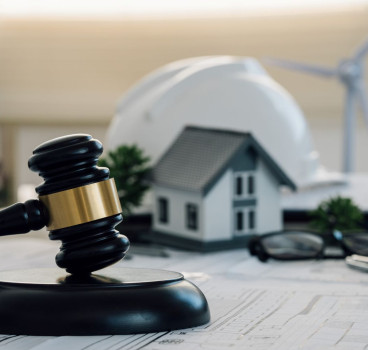Flat Roofing - trends and market opportunities
Flat roofing, the leading roofing solution for commercial and industrial buildings, is undergoing a transformation, driven by advancements in technology and sustainability concerns. The market, valued at USD 33.67 billion in 2021, is projected to reach USD 58.56 billion by 2028, registering a CAGR of 9.1% during the forecast period – and with such growth, comes new opportunities, writes John Ridgeway.
Major changes, such as the growing awareness of environmental impact is prompting the development of eco-friendly flat roofing materials. This includes lightweight, recyclable composite materials, bio-based asphalt membranes, and self-healing roofs that reduce the need for maintenance and extend roof lifespan.
Conventional flat roofing materials, such as asphalt and bitumen based products, are often heavy and resource-intensive to produce. This has led to the emergence of lightweight, recyclable composite materials as a sustainable alternative.
Lightweight composites minimise the structural load on buildings, reducing the need for reinforced concrete structures. This can lead to lower material costs, energy consumption, and carbon emissions during construction.
Composite materials are often more resistant to degradation and punctures. This extended lifespan translates to lower maintenance costs and reduced waste generation. These materials can also be easily recycled at the end of their lifespan, diverting them from landfills and minimising their environmental footprint.
Asphalt or bitumen, traditional flat roofing materials, are often derived from petroleum-based products, contributing to greenhouse gas emissions. To address this environmental concern, bio-based asphalt membranes are gaining traction. These membranes utilise renewable resources like agricultural byproducts or recycled materials, reducing the reliance on fossil fuels.
Self-healing roofs are another revolutionary innovation that addresses the issue of roof maintenance and resource consumption. These roofs incorporate self-repairing technology that can automatically seal small cracks or punctures, minimising the need for human intervention and extending roof lifespan. This feature not only saves time and labour costs but also reduces the use of patching materials and waste generation.
We can also see that the integration of technology continues to play a crucial role in advancing sustainable flat roofing solutions, such as the development of IoT-enabled sensors embedded in flat roofs, which can collect data on temperature, moisture levels and structural integrity, providing real-time insights into roof health. This information can be used to optimise maintenance schedules, prevent leaks, and extend roof lifespan.
Intelligent coatings can detect moisture intrusion and emit warning signals, alerting building managers to potential problems before they escalate. This proactive approach reduces the risk of leaks, premature roof failure, and expensive repairs.
Hydrostatic pressure relief systems, designed to prevent roof collapse under extreme water pressure, a common concern for flat roofs during intense rainfall events, are also being more widely introduced. By relieving excess water pressure, these systems safeguard the integrity of the roof and protect the building from potential damage.
The future of flat roofing is undeniably intertwined with sustainability. As the demand for eco-friendly and resource-efficient solutions grows, manufacturers are continuously innovating and developing new materials, technologies and design approaches that minimise environmental impact and extend roof lifespan
This in turn is resulting in new market opportunities. Aging buildings worldwide can be retrofitted, changing existing roofs with modern materials and technologies that can improve energy efficiency, reduce maintenance costs, and extend the lifespan of buildings.
This trend is increasing as governments worldwide implement stricter building codes that emphasise sustainability. This is driving demand for eco-friendly flat roofing materials that meet green standards and reduce the environmental impact of buildings.
With the rapid growth of cities and urban areas, leading to an increase in flat roofing installations. Multistorey buildings, commercial complexes, and infrastructure projects are increasingly opting for flat roofing systems due to their space-saving efficiency.
This in turn is creating additional challenges. The construction industry, including flat roofing, is facing severe labour shortages, making it more difficult to find skilled workers for installation and maintenance. This can lead to delays, higher costs, and potential safety concerns.
Adhering to stringent building codes and ensuring compliance with safety regulations can also be complex and time-consuming, especially for complicated projects or retrofitting existing roofs.
In spite of these challenges, we can see that the flat roofing market is poised for significant growth in the coming years, driven by the adoption of sustainable materials, innovative technologies, and expanding market opportunities. As the building industry embraces sustainability and advanced technologies, flat roofing is set to become an even more integral part of the modern construction landscape.
Additional Blogs

How construction can cut Its carbon footprint by caring for soil
Soil is often dismissed as mere dirt, but it is one of the planet’s most powerful carbon stores, holding more than all of the world’s forests combined. Yet in our rush to build, pave and develop, we...
Read moreWhat is bridging damp? How it happens and how to fix it
Bridging damp happens when moisture finds a path around the building’s damp-proof course (DPC) so it reaches your internal walls and skirting. If you see damp patches rising above the skirting or...
Read more

The silent death of the fixed-price contract
For decades, the fixed-price contract has been the backbone of construction procurement. It promised certainty with a defined scope, an agreed sum and a clear transfer of risk from client to...
Read more